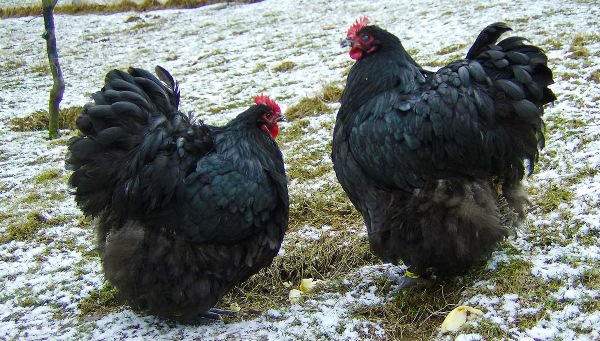Orpington refers to the meat-and-egg direction, is well distinguished, stable and widespread. The bird of this breed differs markedly from other hens by its characteristic features, the description and photo of which is presented below.
Table of contents
Breed description
Features of the breed make it attractive for breeding
Appearance
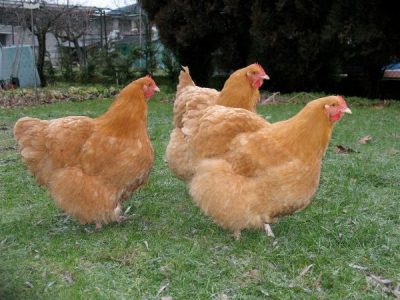 Any bird colors fair-skinned, massive, with a cubic form of the body on the legs of medium length. The head is rounded small with an erect leaf-shaped comb, red small lobes and earrings. The eyes are black, brown, orange, correlated with the color of the plumage. Strong neck smoothly expands to the shoulders and chest, forms a curved line with the back and tail. The chest and abdomen are voluminous, the back is wide, the tail is short.
Any bird colors fair-skinned, massive, with a cubic form of the body on the legs of medium length. The head is rounded small with an erect leaf-shaped comb, red small lobes and earrings. The eyes are black, brown, orange, correlated with the color of the plumage. Strong neck smoothly expands to the shoulders and chest, forms a curved line with the back and tail. The chest and abdomen are voluminous, the back is wide, the tail is short.
Temperament
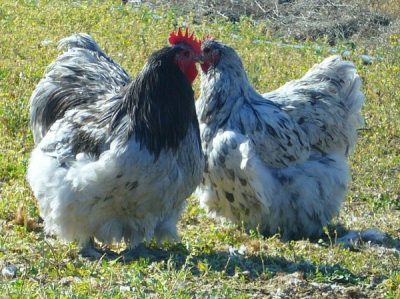 Orpingtons are calm, accommodating birds. Without alertness refer to the person. Well reconciled with different conditions of life. The best performance is achieved with captive content, when there is the possibility of daily walking. Adaptation in a new place is good.
Orpingtons are calm, accommodating birds. Without alertness refer to the person. Well reconciled with different conditions of life. The best performance is achieved with captive content, when there is the possibility of daily walking. Adaptation in a new place is good.
It is important that the chickens of this breed - good hens. Thus, the flock itself can provide reproduction of livestock. When changing generations for the purity of the breed requires a change of the rooster.
Using
Chickens of this breed are bred mainly in household plots and in small farms for self-sufficiency in meat and eggs. Under optimal conditions, it is the best. source of meat and eggs for family table.
Specifications
Roosters weight orpingtons reaches 4–4.5 kg, and chickens — 1 kg less. With the tendency of the breed to quickly gain mass, these indicators are achieved without problems. If you do not control the physical activity of the bird and its diet, then it is possible and excess weight. However, this is not a desirable phenomenon, since in this case, the chicken has an excess of fat, not meat.
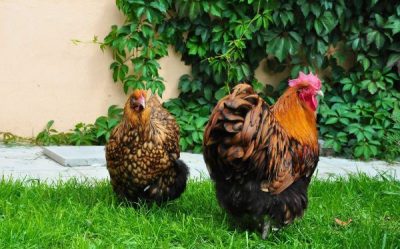 Egg production is average: up to 160 eggs in the first year with a tendency to decrease by 15 - 20% in each subsequent year. Such indicators make it impractical to keep hens for more than 2 years. The weight of an egg is about 50 g, it depends on the condition of the bird, and, therefore, on the conditions of detention.
Egg production is average: up to 160 eggs in the first year with a tendency to decrease by 15 - 20% in each subsequent year. Such indicators make it impractical to keep hens for more than 2 years. The weight of an egg is about 50 g, it depends on the condition of the bird, and, therefore, on the conditions of detention.
When recalculated for dry food per 1 egg, 270 g of feed are consumed. Vital content reduces this figure by a third.
Breed species, photos and videos
Orpingtons are represented a wide range of colors, each of which has a standard and its own characteristics. Below are the species of the breed and their description.
Black
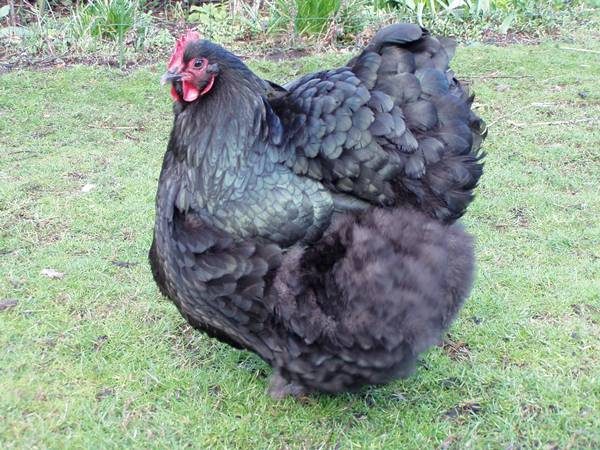
Black The original color of the breed. The pen is glossy with a greenish sheen, the down is black. The eyes and beak are dark, from deep brown to black, the metatarsus are black. Signs of degeneration: haze feather, lilac or bronze gloss, reddishness, light fingers, fluff and beak.
Black-eyed
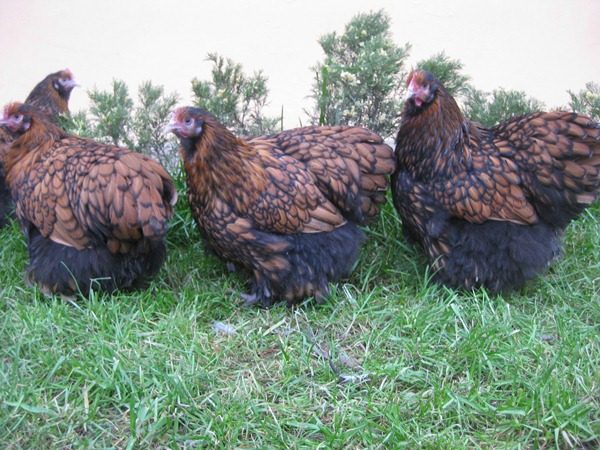
Black-eyed (gold-bonded). Brown feathers with black stripes on the end. Typical distribution - mottled top, black belly. Beak and metatarsals are light, fingers are darker, it is permissible. Evils: a mixture of black and brown feathers, a dark beak and feet.
White
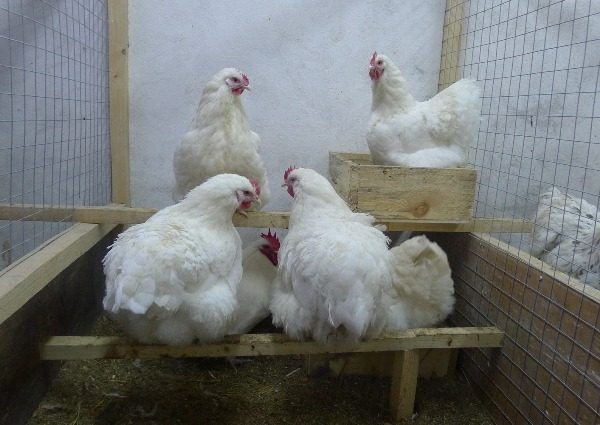
White Absolutely white feather and down, beak and feet, orange eyes. Rejection: yellowness of plumage, blue or red strokes on the tars.
Marble
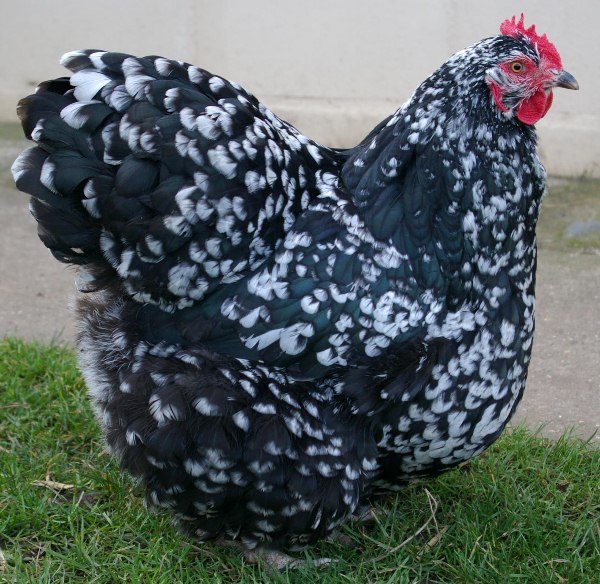
Marble (black and white spotted, birch). The base color is black. Each feather has a large white wedge-shaped spot V. The beak is white, black spots are permissible. Eyes red-orange, metatarsus white, pale pink. Deviations from the norm: brown, red, yellow shades of plumage.
Yellow (golden, fawn)
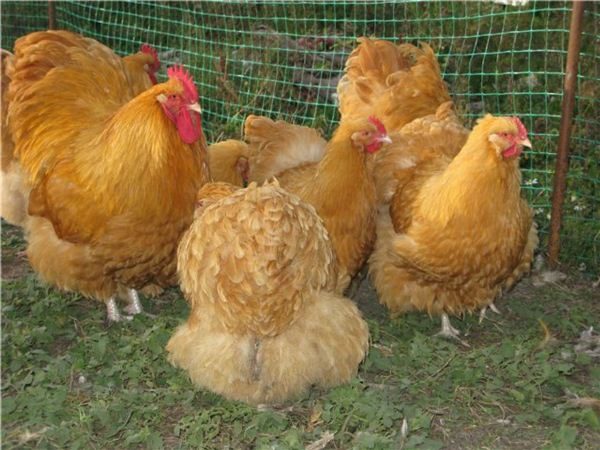
Yellow (golden, fawn). Deep yellow (golden) feathers with gloss, growing on the mane and lower back in roosters. The down is yellow matte, the beak is light / white, the metatarsus are white, the eyes are red-orange. Deviations: pale colouration, dullness of a feather, reddish color, spotting, color zonality, dark and white inclusions, light down, yellowish or blue tint in color plus, red touches on the skin.
Porcelain (parcel, chintz)
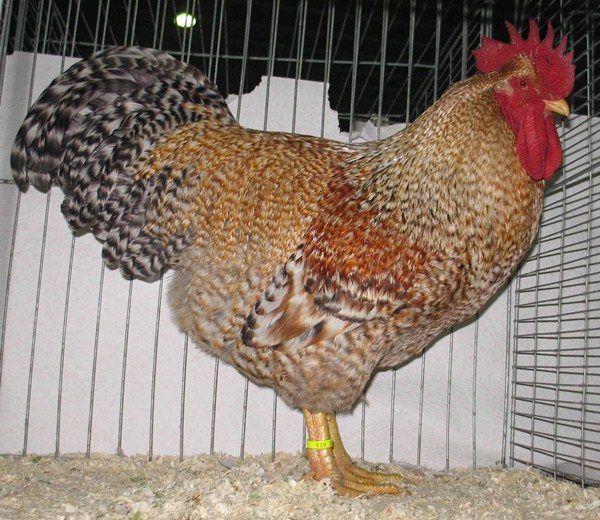
Porcelain (parcel, chintz) The tricolor feather: the base is red-brown, on the tip of the pen is a black spot with a white dot on the edge (“pearl”). Steering and braids black with a white tip. The eyes are red-orange, the beak is light horny or white, the metatarsus are white or pale pink. Non-standard: black plumage on the chest, white feathers, dull color of the feather, small black dots in the colors.
Blue
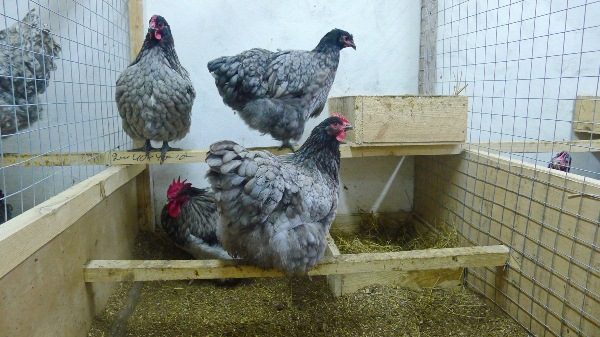
Blue The main color is gray (pigeon). Dark border on each feather. The mane and loins are black and blue glossy, the tail is blue, the down is blue. Black beak, slate or black metatarsus, eyes black-brown or black. Evils: uneven or pale color, red or blackish patina, red eyes, bright metatarsus.
Striped
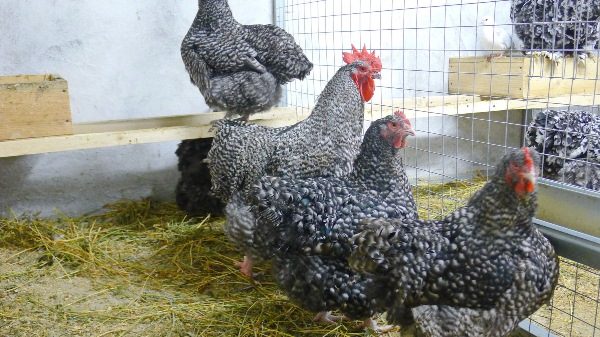
Striped (hawk). The base is black gloss with a greenish sheen, white clear transverse stripes, wider than the black interlayer between them. At the end of the pen is a black stripe. Pooh is also striped. Beak and feet are bright / white, eyes are red-orange. Deviations: unusual shades, monophonic down, dark beak and feet.
Chocolate
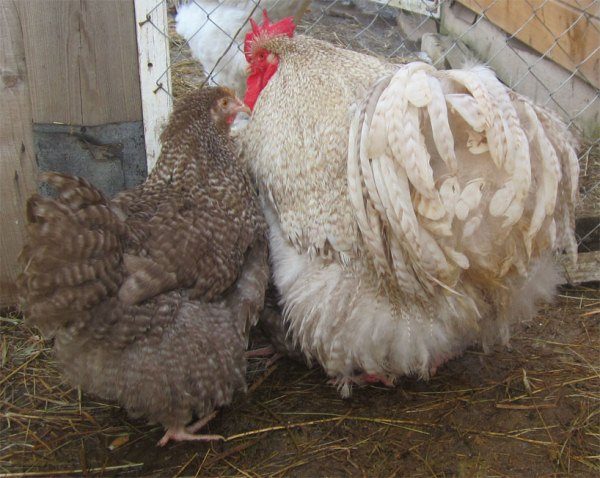
Chocolate. Brilliant black and chestnut zonal plumage color, dull down.Beak and tarsus bright. The eyes are red or dark brown. Non-standard: dark beak and feet.
Breeding
With all the simplicity of the breed, consideration of content requirements, provision of proper nutrition and prevention of diseases will definitely have a positive effect on the development of the representatives of the breed.
Chickens
In the first 10 days, an indispensable element of the menu is a hard-boiled crushed egg - 1 pc. on 30 chickens. From the 11th day it is replaced by meat and bone meal or fish meal.
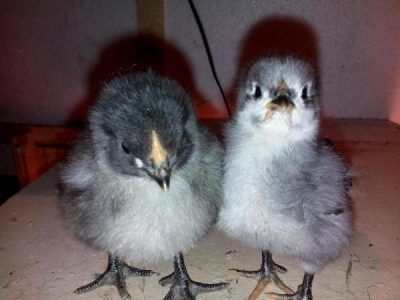 AT chicken diet also includes reverse, cottage cheese with a low percentage of fat, crushed grain, raw greens. From the 4th day add the cake of rough greens.
AT chicken diet also includes reverse, cottage cheese with a low percentage of fat, crushed grain, raw greens. From the 4th day add the cake of rough greens.
The total amount of feed increases gradually: from 15 g on the first day to 110 g by the end of the second month. After 60 days of isolation, older chicks are transferred to a common flock.It is quite safe - for orpingtons they are not characterized by agitation at the sight of newbies, they are peaceful and, I can even say, somewhat indifferent to their neighbors.
Adults
Teenagers and adult birds food is provided mixed feed or offer a mixed menu.
The composition of nutrient mixtures must include:
- crushed grain or whole, about 50 - 60 g / head per day;
- greenery fresh / dried - 25/5 g;
- bran millet - 10 g;
- vegetable meal - 12 g;
- flour fish or bone meat - 7;
- reverse - 25 ml;
- yeast - 3 g;
- salt - 0.7 g;
- a piece of chalk - 5
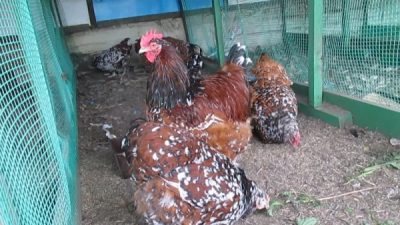 The energy value 1 kg of feed should be 2900 kcal.
The energy value 1 kg of feed should be 2900 kcal.
In addition to feeding the bird, it is necessary to provide sand-ash baths for the prevention of parasites, as well as to add eggshells regularly to the feeders for chickens. Rooster this supplement is not required.
Feeders are best placed not on the floor, but higher - in order to avoid trampling of food. Drinking bowls are placed at the level of the hens chest, and the feeders are 2-3 cm higher.Males put equipment another 2 cm above.
Laying hens and hens
They are provided good nutrition during the whole year. This will prevent a decrease in egg production in winter and the release of eggs. An equally important factor is sufficient intake of fresh air. It is provided by regular walking of the bird herd, airing the chicken coop.
Treatment
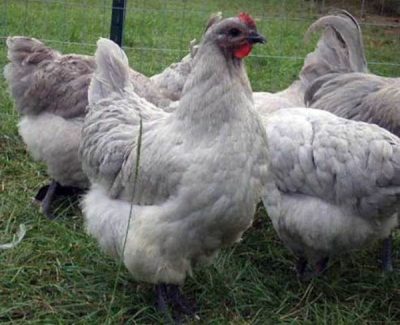 For the prevention of disease, all individuals regularly take antihelminthic and anti-parasitic drugs. If conditions are good, the bird rarely gets sick. Important to maintain acceptable temperature in the chicken coop (13 - 18 °), provide livestock with thick bedding and water, exclude contact with wild birds. During the molting period, feeding is enhanced, and the temperature in the room is monitored. The diseased bird is isolated, treated according to the condition.
For the prevention of disease, all individuals regularly take antihelminthic and anti-parasitic drugs. If conditions are good, the bird rarely gets sick. Important to maintain acceptable temperature in the chicken coop (13 - 18 °), provide livestock with thick bedding and water, exclude contact with wild birds. During the molting period, feeding is enhanced, and the temperature in the room is monitored. The diseased bird is isolated, treated according to the condition.
Advantages and disadvantages
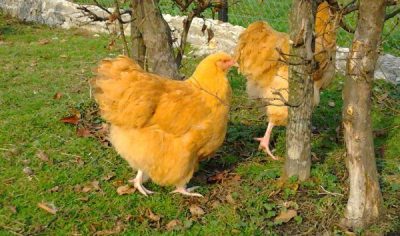 TO positive qualities Orpington include:
TO positive qualities Orpington include:
- big meat yield and its excellent quality;
- start of egg production at 6 months;
- not bad egg production;
- ability to incubation;
- calm temperament;
- unpretentiousness and easy adaptation.
disadvantages few in number
- decline productivity over time and depending on conditions;
- increased amount of feed to achieve optimal weight (+ 5%);
- long weight gain (1 year);
- the need for regular manufacturer shifts.
Orpington Reviews
Breeders have different opinions and reviews on the forums about this bird, but it does not leave anyone indifferent.
Sasha, Voznesenskadmires the decorative pedigree birds.
Lolo from St. Petersburgthat chickens do not show signs of breed for a long time - up to 4 - 6 months.
Ivy, poultry tellingthat at first did not understand the beauty of this bird, but now it breeds with pleasure.
Natalie from Tver region dreams of orpingtons and is looking for a breeder near to buy.
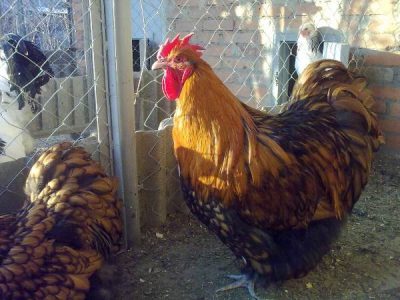 Those who have tried to do this breed, note the delicious taste of meat, good performance of eggs, obscenity and calmness of the bird. The breed is well spread in Ukraine and Russia, the owners change the males to maintain the breed.
Those who have tried to do this breed, note the delicious taste of meat, good performance of eggs, obscenity and calmness of the bird. The breed is well spread in Ukraine and Russia, the owners change the males to maintain the breed.
Orpingtons combine the best poultry quality: delivery of meat and eggs, decorative, easy maintenance.That is why they are always in demand by poultry farmers for personal use.
